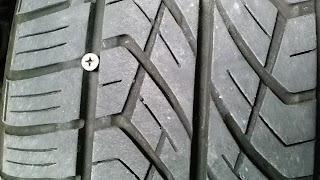Since my cyan toner cartridge (Brother TN-210C) was reading empty I decided it was time to try refilling it instead of paying about $70 for a new cartridge.
I ordered a set of toner in little individual bottles that came with one of each of the colors and two black refills. The whole set was about $25. But I didn't use any of it yet because I came up with a different plan.
The instructions said to empty the remaining toner, discard it, and then fill it with the new toner. I figured maybe the reason for discarding the old stuff was one of the following:
1. The new toner was materially incompatible with the old toner.
2. The new toner was a slightly different shade of cyan.
3. To make sure exactly 45 grams was going back in.
4. The toner salesman was against conservation.
5. His boss was holding a sales contest.
Whatever the reason, I wanted to measure the amount remaining in the old cartridge. It was tough figuring out how to remove the plug without damaging it. I finally found that a 90 degree pick will work if you insert it along the side and rotate it so the angle part is against the bottom side of the plug. Then carefully pull hard and the plug will pop out, along with a puff of toner dust.
The plug wasn't made to come out. If you damage yours so that it won't
hold toner in, you can get a rubber heater hose cap from your local auto
parts store (shown above). The 5/8" size with 1/8" thick rubber will fit in the 7/8"
opening. If you cut it to the right length, it should work just as well
at keeping the toner in, plus it's easier to re-use than the original cap.
So I dumped the remaining toner on a clean sheet of paper and weighed it. The scale said there were 20 grams left over.
This got me curious. I was wondering how much was left over from the original starter cartridge. (Being the pack-rat that I am, and figuring I could try to re-fill it later, I saved it.) So I popped the plug out and dumped the contents onto the same pile.
I was kind of shocked that there was about 40g left over in the started cartridge, considering that the refill was only 45g. So I made the decision to save the new toner and just dump the pile back into the cartridge. I grabbed a funnel, wiped it clean, and dumped all 60g into the toner cartridge. I popped the plug back in the hole and reset the flag gear.
Here's how to reset the flag gear:
1. Remove the two phillips screws shown here.
2. This is the flag gear position for empty.
3. Set the flag gear to this position to reset it. (It's about a quarter turn counter-clockwise from the empty position.)
After a test print, I saw that the cartridge was working perfectly.











